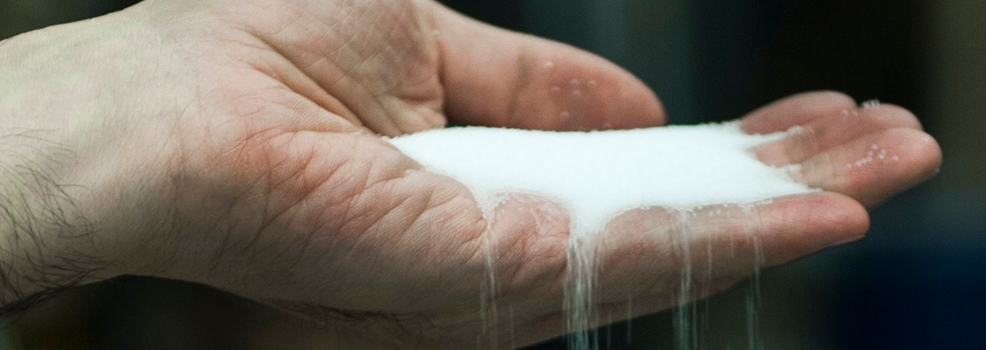Raw materials
Plastic materials were developed at the dawn of the 20th century and underwent a phase of intensive development during World War II. This evolution allowed expanded polystyrene (EPS) to appear in the 1950s. This organic compound is a derivative of natural gas and oil.

OIL APPLICATIONS
Plastics, all = 5 % / EPS = 0.1 %
Combustibles = 85 %
Asphalt, lubricants and other = 10 %
https://en.wikipedia.org/wiki/Petroleum_product
A very small fraction of all extracted petroleum, 0.1 %, is transformed into EPS. Close to 85 % of the petroleum used globally is burned for different industrial applications and for transportation.
There are three great plastic families:
- Thermoplastic: Shaped by heat and easily recycled PS, PP, PE, ABS, PVC, PET, etc.). Expanded plastics are part of these families.
- Thermosetting: Shaped via an irreversible chemical reaction, they are difficult to recycle. (Polyester, polyurethane, epoxy, etc.)
- Elastomer: These polymers have a very high elasticity, they are produced by cross-linking and are difficult to recycle (Buna, silicone, EPDM, etc.)
Performance
The exceptional properties of expanded polystyrene (EPS) inspires the creation of products that are much more efficient than with other materials:
- Insulating concrete forms (ICF): Insulating concrete forms are sustainable products that provide important energy savings. A building made from insulating concrete forms (ICF) can help reduce the cost of climate control by 30 % compared to a conventional type of construction. Consequently, the amount of petroleum and energy used to manufacture the product is counterbalanced hundreds of times by the energy savings in heating and air conditioning during the building’s life. In addition, a house built out of concrete with insulated concrete forms (ICF) made of EPS will last longer than a wooden structure. It will resist bad weather, tornados, humidity and insects better. And finally, the building offers better fireproofing, is safer and helps reduce the cost of insurance.
- EPS coffee cups: This everyday product is a proven, eco-friendly solution, despite certain myth-based perceptions:
- It requires three times less energy to produce than a paper cup
- Its low mass is made of very little matter (96 % air)
- Unlike cardboard products, the production of EPS does not produce any water pollution and does not promote deforestation
- Because of its inert chemical properties, EPS does not deteriorate into invisible and harmful components. It can therefore be buried without causing the contamination of groundwater and air
- The burial of EPS products improves the ground stability and the air quality around landfill areas
- This EPS product can be recycled if sent to specialized processors
